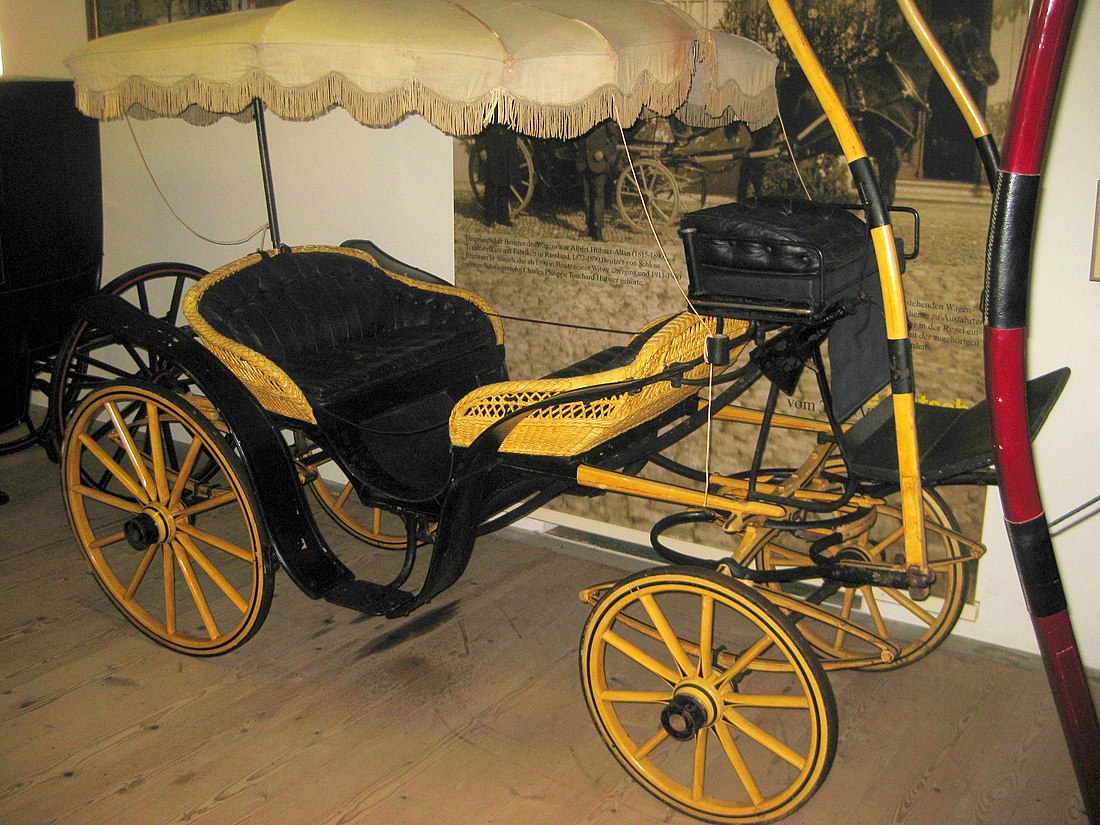Top Qs
Timeline
Chat
Perspective
Vis-à-vis (carriage)
Four-wheeled horse-drawn vehicle From Wikipedia, the free encyclopedia
Remove ads
A vis-à-vis is a carriage in which the passengers sit face to face with the front passengers facing rearward and the rear passengers facing forward.[1] The term comes from the French vis-à-vis, meaning face to face.[1][2]: 28

These carriages are still commonly made by Amish carriage makers in the midwestern United States.[citation needed] Also in the Western world, the vis-a-vis is the most common type of carriage style used to cart tourists and leisure seekers in downtown urban settings.
Passengers sit back-to-back on dos-à-dos carriages.
Remove ads
Examples
The following types of carriage had vis-à-vis seating:
Automobiles

There were vis-à-vis automobiles in the early history of motoring.[2]: 28 These were driven from the forward-facing rear seat, with front passengers sitting ahead of the steering controls and facing the driver.[1][2]: 28 [3] Passengers in the front seat would obstruct the vision of the driver in the rear seat, and the style fell out of favour before 1905.[1][2]: 27-28
Remove ads
See also
Wikimedia Commons has media related to Vis-à-vis automobiles.
References
Wikiwand - on
Seamless Wikipedia browsing. On steroids.
Remove ads
